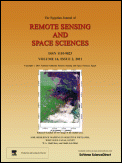
Egyptian Journal of Remote Sensing and Space Sciences
Scope & Guideline
Unlocking New Horizons in Earth and Space Exploration
Introduction
Aims and Scopes
- Remote Sensing Applications:
The journal emphasizes the practical applications of remote sensing in diverse fields such as agriculture, forestry, urban planning, and environmental monitoring, showcasing how satellite and aerial imagery can be utilized for effective resource management. - Geospatial Data Integration:
Research published in the journal often involves the integration of various geospatial data sources, including satellite imagery, LiDAR, and GIS, to enhance the understanding of spatial dynamics and improve decision-making processes. - Machine Learning and AI in Remote Sensing:
The journal highlights the use of machine learning and artificial intelligence techniques to analyze remote sensing data, providing innovative solutions for challenges such as land use classification, change detection, and environmental modeling. - Climate Change and Environmental Monitoring:
A significant focus of the journal is on the impact of climate change and anthropogenic activities on natural resources, with studies assessing changes in land cover, vegetation health, and environmental quality through remote sensing. - Geophysical and Geological Applications:
The journal publishes research on the application of remote sensing in geology and geophysics, including mineral exploration, geological mapping, and assessing natural hazards.
Trending and Emerging
- Integration of AI and Machine Learning:
There is a significant uptick in research applying artificial intelligence and machine learning techniques to remote sensing data, enhancing the accuracy and efficiency of data analysis for applications like crop monitoring and urban planning. - Focus on Climate Change Impact Studies:
An increasing number of studies are dedicated to understanding the impacts of climate change through remote sensing, including assessments of land cover changes, water resources, and vegetation dynamics. - Advancements in UAV Applications:
The use of unmanned aerial vehicles (UAVs) for remote sensing is gaining momentum, with more papers addressing innovative applications in environmental monitoring, precision agriculture, and disaster management. - Multispectral and Hyperspectral Imaging:
There is a growing trend toward using multispectral and hyperspectral imaging techniques for detailed analysis of land cover, mineralogy, and environmental conditions, indicating a shift towards high-resolution data. - Geospatial Big Data Analytics:
Research focusing on the integration and analysis of large geospatial datasets is emerging, highlighting the journal's alignment with trends in big data analytics and its application in remote sensing.
Declining or Waning
- Traditional Remote Sensing Techniques:
There is a noticeable decrease in studies utilizing conventional remote sensing techniques without the integration of advanced analytics, such as machine learning, indicating a shift towards more sophisticated methodologies. - Focus on Localized Studies:
While localized case studies were once prevalent, there seems to be a reduction in papers addressing specific regional issues, possibly due to a growing interest in broader, global-scale analyses and comparative studies. - Basic Environmental Assessments:
Papers focusing solely on basic environmental assessments without innovative methodologies or significant findings are becoming less common, as the journal increasingly favors studies that offer new insights or advanced techniques.
Similar Journals
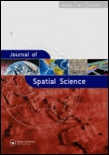
Journal of Spatial Science
Pioneering Research for a Sustainable Spatial FutureThe Journal of Spatial Science, published by Taylor & Francis Ltd, serves as a prominent platform for the dissemination of research in the interdisciplinary fields of geography, atmospheric science, and energy. With an ISSN of 1449-8596 and an E-ISSN of 1836-5655, this journal has established itself as a vital resource since its inception in 2004, boasting an impressive convergence period extending to 2024. Recognized in the Q3 quartile for Atmospheric Science and Energy (miscellaneous), and achieving a Q2 classification in Geography, Planning and Development in 2023, the journal not only reflects the evolving complexities of spatial science but also underscores its increasing relevance in addressing contemporary global challenges. The journal holds a commendable position in Scopus rankings, with notable placements in various categories, further highlighting its academic significance. Researchers, professionals, and students are encouraged to engage with the rich content offered, as the Journal of Spatial Science remains committed to advancing knowledge and fostering discussions pertinent to spatial analysis and its applications.
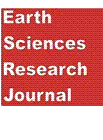
Earth Sciences Research Journal
Illuminating the Path to Earth’s PreservationThe Earth Sciences Research Journal, published by the UNIV NACIONAL DE COLOMBIA, serves as a pivotal platform for the dissemination of knowledge in the diverse field of Earth and Planetary Sciences since its inception. With an ISSN of 1794-6190 and an E-ISSN of 2339-3459, this Open Access journal has been committed to providing unrestricted access to high-quality research since 2004. Located in Bogotá, Colombia, it has gained recognition within the academic community, achieving a Q3 quartile ranking in Earth and Planetary Sciences and notable Scopus rankings, which further underscores its relevance and reach. Its scope encompasses varied research topics, making it an essential resource for researchers, professionals, and students alike, seeking to contribute to or stay informed on the latest developments in the Earth sciences up to the year 2024. The journal not only anticipates cutting-edge research but also emphasizes collaborative dialogues among global experts, driving forward the conversation on critical issues facing our planet.

ISPRS International Journal of Geo-Information
Advancing geospatial understanding for a better tomorrow.ISPRS International Journal of Geo-Information, published by MDPI, stands at the forefront of the field of geospatial sciences, contributing valuable knowledge and research insights since its inception in 2012. This open access journal, which boasts an impressive collection of articles that emphasize the integration of geographic information systems (GIS) in Earth and planetary sciences, currently achieves a remarkable standing, with a 2023 impact factor ranking in the Q1 category for both Earth and Planetary Sciences and Geography, Planning and Development. Researchers and professionals engaged in the study of spatial data, remote sensing, and innovative geoinformation technologies will find the journal an essential resource, offering diverse perspectives and methodologies. With its open access model, the journal aims to promote the dissemination of knowledge globally, fostering collaboration among scholars while pushing the boundaries of research in geoinformation disciplines. The journal is based in Switzerland and is well-positioned to contribute significantly to the understanding and application of geospatial data for societal advancements.

Geographia Technica
Bridging Disciplines for a Sustainable FutureGeographia Technica is an esteemed academic journal published by GEOGRAPHIA TECHNICA ASSOCIATION - GT Assoc in Romania, serving as a vital platform for the dissemination of cutting-edge research in the interdisciplinary fields of geography, planning, and earth sciences. Since its inception in 2009 and continuing through to 2024, the journal has established itself as a respected source of knowledge, reflected in its classification within the Q3 category across significant fields such as Computers in Earth Sciences, Earth-Surface Processes, and Geography, Planning and Development. With the ambition to enhance the understanding of socio-environmental interactions and technological applications in these areas, Geographia Technica invites scholars and practitioners to contribute original research that pushes the boundaries of current knowledge. Although currently not listed as open access, the journal's engaging content ensures it remains a valuable resource for researchers, professionals, and students keen on advancing their expertise in these dynamic disciplines.
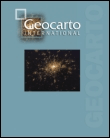
Geocarto International
Bridging Disciplines for a Sustainable FutureGeocarto International is a premier peer-reviewed journal published by Taylor & Francis Ltd that focuses on the intersection of geography, planning, and environmental science, offering valuable insights into emerging research trends and methodologies within these fields. With an impressive impact factor, the journal is consistently recognized for its contributions, ranked in the Q1 category for Geography, Planning, and Development as well as Q2 in Water Science and Technology as of 2023. Geocarto International not only showcases high-quality research articles but also embraces Open Access publishing since 2023, promoting accessibility and fostering a global dialogue among researchers, professionals, and students. Spanning over three decades from its inception in 1986 to 2024, the journal continues to serve as an essential platform for disseminating knowledge, advancing scholarly communication, and addressing crucial environmental challenges across the United Kingdom and beyond. Explore the latest advancements and contribute to the dynamic discussions shaping the future of geography and environmental sciences through Geocarto International.

CANADIAN JOURNAL OF REMOTE SENSING
Advancing Knowledge in Earth and Planetary SciencesCanadian Journal of Remote Sensing is a prestigious, peer-reviewed journal published by Taylor & Francis Inc., based in the United Kingdom. With an impressive impact factor and a Scopus ranking placing it in the 76th percentile among general Earth and Planetary Sciences, this journal is integral for researchers and professionals exploring the dynamic field of remote sensing. Since its inception in 1975 and now continuing through to 2024, it has been a platform for disseminating cutting-edge research and advancements in both methodologies and applications across diverse environments. As of 2023, it has transitioned to Open Access, ensuring wider access to its scholarly articles, which cover a broad spectrum of topics including satellite imagery, data interpretation, and environmental monitoring. This journal is not only crucial for fostering innovation and collaboration within Earth sciences but also serves as a critical resource for students and academics alike, eager to stay abreast of the latest developments in remote sensing technology and methodology.
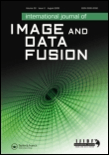
International Journal of Image and Data Fusion
Exploring the Synergy of Data and ImageryThe International Journal of Image and Data Fusion, published by TAYLOR & FRANCIS LTD, is a premier scholarly journal dedicated to the fields of computer science applications and earth and planetary sciences. With an ISSN of 1947-9832 and E-ISSN 1947-9824, this journal offers a unique platform for researchers, professionals, and students interested in the innovative integration of image processing and data fusion techniques. Operating from the United Kingdom, it plays a vital role in advancing knowledge and facilitating discussions in these rapidly developing domains, evidenced by its ranking within the Q3 category for Computer Science Applications and Q2 for Earth and Planetary Sciences in 2023. The journal features rigorous peer-reviewed content that spans from 2010 to 2024, encouraging the dissemination of novel research findings and methodologies. With a notable impact factor and strong Scopus rankings, it remains an essential resource for those seeking to enhance their understanding and application of sophisticated data fusion technologies in their academic or professional work.

International Journal of Digital Earth
Unveiling the future of geoscience through digital exploration.Welcome to the International Journal of Digital Earth, a premier open-access journal published by Taylor & Francis Ltd, dedicated to advancing the field of digital geoscience. With its ISSN 1753-8947 and E-ISSN 1753-8955, this journal has established itself as a vital resource for scholars and practitioners alike since its inception in 2008. The journal is at the forefront of interdisciplinary research, showcasing a diverse scope from Earth sciences to computer science applications, evidenced by its impressive ranking in the 2023 Scopus database. It holds a Q1 categorization in Earth and Planetary Sciences, with a percentile rank among the top 16% of its peers, and also stands out in the Q2 quartile for both Computer Science Applications and Software disciplines. The journal's commitment to open access, established in 2022, underscores its dedication to disseminating knowledge and fostering collaboration. By providing a platform for high-quality research, the International Journal of Digital Earth plays a critical role in addressing the complexities of our changing planet through innovative digital solutions. Whether you are an experienced researcher or a student, this journal is an essential addition to your academic toolkit.

Journal of Geovisualization and Spatial Analysis
Navigating the Future of Earth Sciences with PrecisionJournal of Geovisualization and Spatial Analysis, published by SpringerNature, is an influential open-access journal specializing in the cutting-edge fields of geovisualization, spatial analysis, and their application in earth sciences and geography. Since its inception in 2017, this journal has established a prominent stance with a high impact factor and prestigious Q1 rankings across multiple categories, including Computers in Earth Sciences, Earth and Planetary Sciences (miscellaneous), and Geography, Planning and Development. The editorial board is committed to advancing innovative research and methodologies, providing a platform for scholars to disseminate their findings globally. With impressive Scopus rankings—placing it in the top percentiles among its peers—the journal serves as a vital resource for researchers, professionals, and students keen on understanding spatial data and its implications for geographic science. Its emphasis on rigorous peer review and rapid publication enhances accessibility to substantive research, thus fostering knowledge sharing within the scientific community. Based in Switzerland, the journal promotes a collaborative environment for interdisciplinary studies, making it an essential read for anyone involved in spatial analysis research.

Geo-Spatial Information Science
Advancing the Frontiers of Geo-Spatial ResearchGeo-Spatial Information Science, published by TAYLOR & FRANCIS LTD, is a premier open-access journal that has been at the forefront of disseminating cutting-edge research since its inception in 1998. With an ISSN of 1009-5020 and an E-ISSN of 1993-5153, this journal plays a pivotal role in the fields of Computers in Earth Sciences and Geography, Planning and Development, achieving a prestigious Q1 ranking in both categories as of 2023. Its exemplary Scopus rankings highlight its relevance within the social sciences and earth sciences, placing it among the top echelons of its field, with a 95th and 93rd percentile respectively. The journal aims to bridge the gap between innovative geospatial technologies and their applications in real-world scenarios, fostering interdisciplinary collaboration and advancing the global understanding of spatial data analysis. Based in the United Kingdom, Geo-Spatial Information Science invites researchers, professionals, and students to contribute and access research that shapes the future of geo-spatial sciences, all while adhering to open access principles that ensure broad dissemination and engagement with the broader academic community.